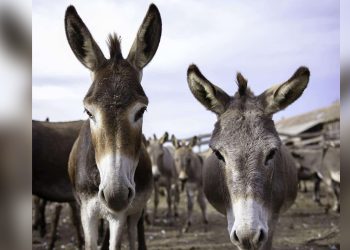Agriculture is considered the backbone of Pakistan’s economy and accounts for18.9% of the GDP and employs 42.3% of labour force. The sector directly supports three-quarters of the country’s population, employs half the labour force and contributes a large share of foreign exchange earnings.
Pakistan depends on one of the world’s largest irrigation systems to support production. Punjab is the most agricultural province where wheat and cotton are mostly grown. Mango orchards are mostly found in Sindh and Punjab, making Pakistan the world’s 4th largest producer of mangoes. The most important crops are wheat, sugarcane, cotton, and rice, which account for more than 75% of the value of total crop output.
Pakistan’s largest food crop is wheat and output reached 26.3 million tons in 2018. Pakistan is a net food exporter, except in occasional years when its harvest is adversely affected by droughts. Pakistan exports rice, cotton, fish, fruits (especially oranges and mangoes) and vegetables and imports vegetable oil, wheat, pulses and consumer foods. The country is Asia’s largest camel market, second-largest apricot and ghee market and third-largest cotton, onion and milk market.
The economic importance of agriculture has declined since independence when its share of GDP was around 53%. Following the poor harvest of 1993, the government introduced agriculture assistance policies, including increased support prices for many agricultural commodities and expanded availability of agricultural credit. From 1993 to 1997, real growth in agricultural sector averaged 5.7 percent but has since declined to about 4 percent. Agricultural reforms, including increased wheat production, play a central role in the economic reform package. Much of the agriculture output is being utilised by the growing processed food industry.
There are various techno-economic, natural, socio-economic and financial problems faced by farmers in Pakistan. The total area is about 79.6 million hectares, out of which only 23.7 million hectares (28 percent) is used for agricultural purposes. About eight million hectares area is idle and unutilised. There is vast sub-division and fragmentation of landholding, and as a result modern technology cannot be applied in agriculture sector. Waterlogging and salinity are twin problems of agricultural sector due to salinity and they have adversely affected the performance of agricultural sector affecting about 0.10 million acres of land every year. It is not only a waste of land but also reduction in productivity.
Rural infrastructure like roads, storage facilities, transport, electricity, education, sanitation and health facilities are inadequate to meet the requirement of agriculture growth. Many villages have no metalled roads at all and electricity is available in only three-fourth of rural populations.
Due to increasing population and division of land under the law of inheritance, landholdings are subdivided over and over again. The result is that a large number of farmers have less than two hectares of area. The holdings are scattered and it is difficult to use modern machinery on small pieces of land. The mechanisation of agriculture is increasing but in most areas old methods are still being used for agricultural production. These orthodox techniques of production cannot increase production according to international levels. The average crop yield is very low as compared to the production levels of the advanced countries. In order to raise the potential of agricultural production, there should be continuous improvement in the research for agricultural growth. There are also just 16 agricultural universities and colleges in Pakistan.
Land reforms have been implemented against the will of people. There is an urgent need to conduct proper land reforms for improving agricultural growth. Defective land tenure system is also responsible for low yield per acre in agricultural sector. Landlords and feudals live in posh urban areas while tenants and peasants have no or less incentive for their hard work and so productivity in the agricultural sector remains low.
Proper rotation of crops is essential to re-establish land fertility as the constant cultivation of one crop or two exhausts soil fertility. Various agricultural crops like cotton, sugarcane, tobacco, wheat and rice often come under pest attack, reducing annual productivity of agriculture. There is 20 percent reduction in productivity due to unnecessary rain and unfavourable climatic conditions.
Our farmers have no proper records of their incomes and expenses. They spend more when they posses due to illiteracy. A huge part of the farmer’s income is consumed on family occasions, rural ceremonies and festivals. The joint family system is also a big problem as poor farmers have to support large families which reduces savings and investment. A huge part of the farmer’s productivity is consumed at his own house. Most farmers, labourers and tenants are illiterate, untrained and inefficient to boost agricultural productivity.
On the other side, the health of farmers is poor due to rural backwardness. The literacy rate is only 57.7 % in Pakistan. Political instability has affected development in all economic and social sectors. Unfortunately, the political situation is not stable, creating unrest among the farmers and compelling them to sell their produce to various industries as raw material. People are also hesitant to invest in the agricultural sector.
Agricultural credit facilities are not common in Pakistan. Moreover non-institutional sources are available but these are not reliable due to high rates of interest. About 50.8% of the low-income people borrow from landlords. The market price of agricultural goods generally remains unstable. The cobweb theorem is very popular in case of market prices – it suggests that the price of one commodity is higher this year and lower in the next year and vice versa. The farmers do not get due reward from the sale of their products and remain unsatisfied.
Supply of agriculture credit, water logging and salinity control, construction of dames, agricultural research, agro-based industries, tax concessions and training of farmers must be available on a priority basis but prices of agricultural products should also be stable.
Rezwanullah, School of Management and Economics, at Beijing Institute of Technology also contributed to this article.



























